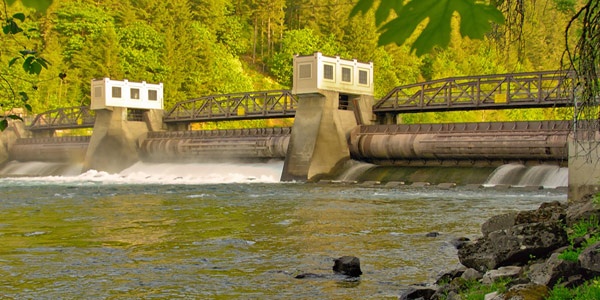By Robert Mullin
FERC last week said it will give CAISO more time to address its concerns over intertie bidding at the borders of the Western Energy Imbalance Market (EIM).
The commission last June rejected the ISO’s proposal to prohibit EIM participants from implementing economic bidding at the market’s external interties until the ISO could develop “appropriate rules and procedures” to manage the transactions. (See FERC Order Prods CAISO to Allow EIM Intertie Bidding.)
While last year’s decision acknowledged that CAISO had “identified issues that warrant further evaluation,” the commission said the ISO had not “sufficiently described” those issues. “As an initial matter, we find it inappropriate for CAISO to include in its Tariff an indefinite placeholder,” the commission wrote, referring to the ISO’s failure to propose a timeline for resolving the issue.
No ‘Plug and Play’

But the commission’s Jan. 31 order was sympathetic to the position of the ISO and other EIM participants, who have maintained that there is no “easy plug-and-play format” for intertie bidding that each participant could adapt to manage transactions at the borders of their balancing authority areas. Although the commission urged ISO officials to continue efforts to increase competition within the EIM, the order failed to impose a timeline for adopting new rules (ER16-1518).
“We’ll have to sit down with our legal counsel and decide how we’re going to respond to the order. … It looks like FERC was generally in agreement with how we proposed to proceed with these issues, which I think are reflective in our [2017 policy initiatives] roadmap as well,” Greg Cook, the ISO’s director of market and infrastructure policy, said during a Feb. 2 meeting of the EIM governing body.
The order comes three months after CAISO, EIM participants and Western power sector participants opposed to the prohibition hashed out their views at a technical conference convened by FERC. (See Foes Narrow Differences at FERC Summit on EIM Bidding.)
At the conference, Mark Rothleder, the ISO’s vice president of market quality and renewable integration, summed up the perspective of existing EIM participants: “We must be careful not to impose requirements that degrade the fundamental design elements of the Energy Imbalance Market that could ultimately unravel the benefits the Western market is experiencing.”
Commissioners appeared to be largely swayed by the ISO’s reservations about moving too quickly toward producing a solution.
“We recognize that implementation of bidding at the EIM external interties may pose challenges for CAISO and the EIM entities,” the commission said. “We encourage CAISO and the EIM entities to eliminate barriers to greater EIM participation and to provide opportunities for increased competition within the EIM.”
Scheduling Bilateral Transactions
The commission also recognized the grievances of the Western Power Trading Forum and others who say they’ve been experiencing challenges in scheduling bilateral transactions into the EIM area since the roll out of the market. They are seeking another form of participation not available in current CAISO and EIM member tariffs.
The Public Generating Pool, which represents 10 municipal utilities in Oregon and Washington, suggested CAISO create rules allowing its hydro-rich members — which control little transmission and have modest budgets — to have access to the market through resource aggregation and a system of “appropriate” administrative costs.

While the order directs FERC staff to monitor CAISO’s efforts on the issue and requires the ISO to provide updates, it largely leaves the ball in ISO’s court by not setting a specific deadline for the grid operator to develop a solution.
“We understand that these issues may not have simple solutions, and that CAISO has many stakeholder initiatives that it must prioritize in order to make the best use of its and its stakeholders’ limited resources,” the commission said.
Still, the commission was favorably impressed that the ISO included in its 2017 Draft Final Policy Initiatives Roadmap initiatives designed to address some of the concerns raise by those seeking broader access to the energy market.
Key among them: a proposal to better align EIM base schedules with bilateral schedules at the seams of the market.
“That was a clear issue that came out of the FERC technical conference — where being able to provide some kind of mechanism for those bilateral schedules to manage the congestion risk going into or through EIM areas was a very important issue for a lot of market participants,” Cook said.
The commission said “we appreciate CAISO’s efforts thus far to address these issues” and encouraged the ISO to work with energy market participants to find way to reduce barriers to market participation.
“We believe CAISO and its stakeholders are in the best position to work through these issues at this time,” the commission said.




